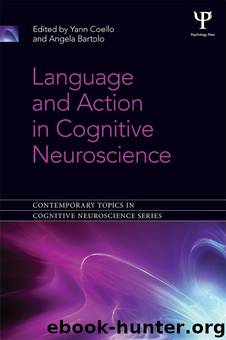Language and Action in Cognitive Neuroscience by Unknown

Author:Unknown
Language: eng
Format: epub
ISBN: 978-1-136-21417-2
Publisher: Taylor and Francis
CHAPTER NINE
Children’s use of spatial reference frames in verbal and non-verbal tasks
Jessie Bullens, Nina Lienenkämper, Frank Wijnen and Albert Postma
INTRODUCTION
When trying to understand a verbal description of a spatial configuration, a listener or reader normally goes beyond the information given, and forms an elaborate mental model in which various attributes of the described scene are inferred (Struiksma et al., 2009; see also Taylor and Zwaan, this volume). When parsing a spatial description and forming a mental model, one always needs to choose a reference frame (RF), which denotes the point of view that is taken when perceiving spatial relations (see also Miller and Carlson, this volume). The observer can choose his or her own viewpoint, take that of an object that is part of the scene, or take one that relies on omnipresent cardinal directions or local/distal landmarks. Depending on the frame of reference, the representations and descriptions of spatial relations within and between objects differ. In the spatial literature two particular RFs are generally dissociated: the egocentric RF in which locations of objects are represented with respect to the observer; and an allocentric RF in which locations of objects are represented within an external framework (i.e. configuration of landmarks). In the language literature other taxonomies have been used to denote linguistic RFs, i.e. viewer-centred, object-centred or environment-centred RFs (see Miller and Johnson-Laird, 1976). In this chapter we use the terms intrinsic, relative and absolute RFs as proposed by Levinson (1996, 2003). A relative RF defines the relations among objects with respect to the observer’s position. Note, however, that the relative spatial location of (an) object(s) change(s) when the observer changes his or her position. Consequently, the use of a relative RF may create ambiguity. The intrinsic RF takes the perspective of one of the objects in the spatial scene, labelled the ‘ground object’ and relates the locations of other objects (‘figures’) to it. For this RF the location of the observer is irrelevant and the definition of a spatial relation does not change when the observer moves. Finally, the absolute RF uses a fixed point of view that is located on an invariable axis, such as the cardinal axes. Since the application of this frame to a scene remains unaltered upon the rotation of either the observer or the object(s), it is essential to be aware of its orientation when perceiving or describing a spatial configuration.
An interesting question arises as to how, which and under what conditions these spatial and linguistic RFs are employed. Regarding the ‘how’ question, consensus seems to exist about the way spatial and linguistic RFs are activated for use: when a spatial scene is presented, all relevant RFs are automatically activated and one frame is selected for the response (Carlson-Radvansky and Logan, 1997; Taylor et al., 1999; see also Miller and Carlson, this volume). However, in the literature there is still ongoing debate about the ‘which’ and ‘under what conditions’ questions. Therefore, in the present study we were specifically interested in these questions, not only from an adult perspective, but also from a developmental perspective.
Download
This site does not store any files on its server. We only index and link to content provided by other sites. Please contact the content providers to delete copyright contents if any and email us, we'll remove relevant links or contents immediately.
The Art of Coaching Workbook by Elena Aguilar(50987)
Trainspotting by Irvine Welsh(21518)
Twilight of the Idols With the Antichrist and Ecce Homo by Friedrich Nietzsche(18503)
Fangirl by Rainbow Rowell(9095)
Periodization Training for Sports by Tudor Bompa(8170)
Change Your Questions, Change Your Life by Marilee Adams(7635)
This Is How You Lose Her by Junot Diaz(6794)
Asking the Right Questions: A Guide to Critical Thinking by M. Neil Browne & Stuart M. Keeley(5635)
Grit by Angela Duckworth(5523)
Red Sparrow by Jason Matthews(5390)
Paper Towns by Green John(5089)
Room 212 by Kate Stewart(5037)
Ken Follett - World without end by Ken Follett(4645)
Housekeeping by Marilynne Robinson(4347)
The Sports Rules Book by Human Kinetics(4294)
Double Down (Diary of a Wimpy Kid Book 11) by Jeff Kinney(4207)
Papillon (English) by Henri Charrière(4195)
The Motorcycle Diaries by Ernesto Che Guevara(4012)
Exercise Technique Manual for Resistance Training by National Strength & Conditioning Association(3955)
